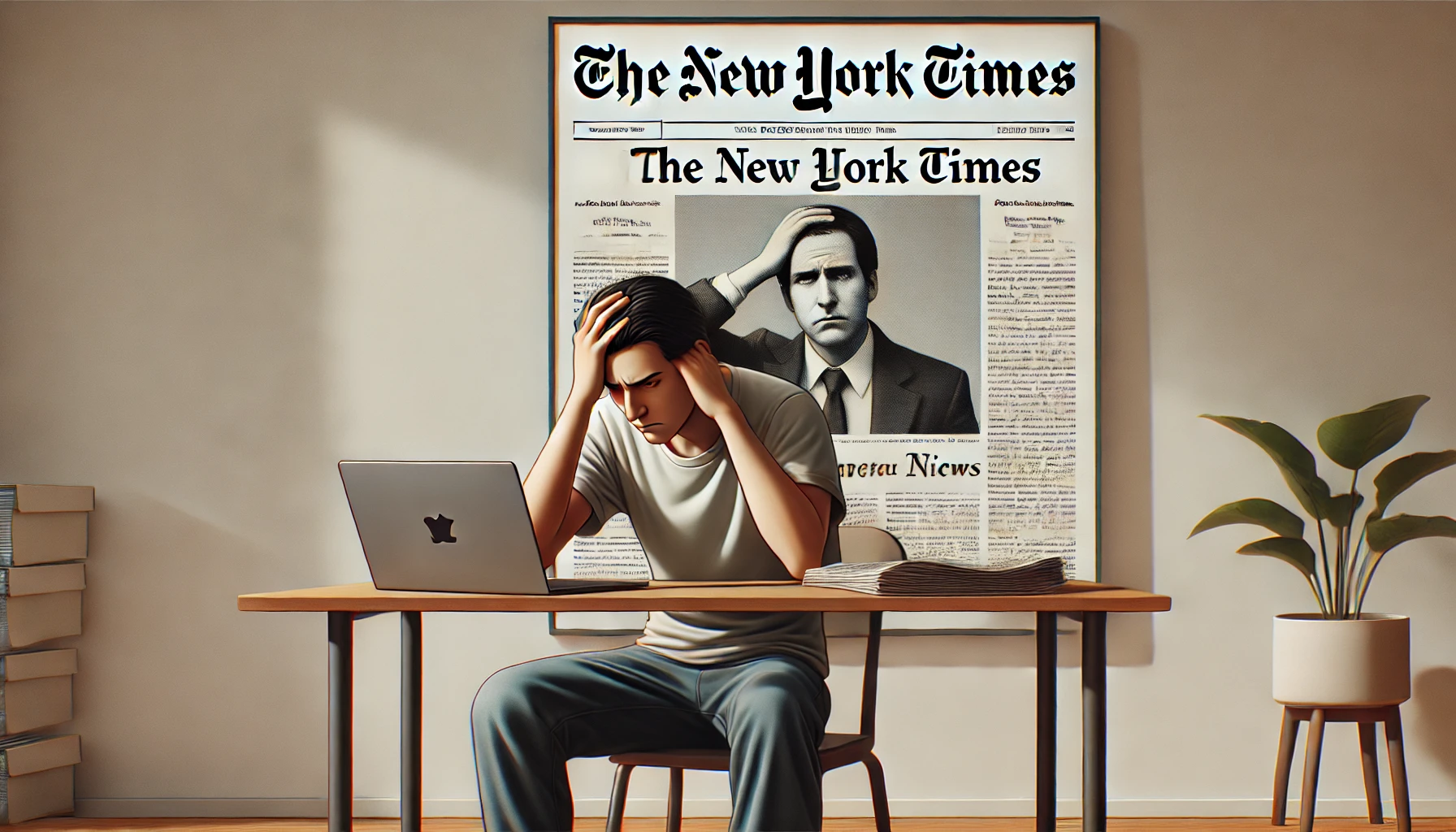In recent years, many readers have started to express their dissatisfaction with The New York Times (NYT), once heralded as a leading figure in journalism. The phrase “no longer a fan of NYT” has become common in discussions surrounding modern media, particularly as individuals critique changes in the newspaper’s editorial practices, perceived bias, and content strategy. This article delves into why readers are turning away from the NYT, exploring both the internal challenges within the organization and the broader shifts in the media landscape.
The Shift from Fan to Critic

For decades, The New York Times maintained a reputation for high-quality journalism, known for its investigative pieces and commitment to truth. However, recent years have seen growing dissatisfaction among longtime readers who argue that the paper has become less objective and more ideologically driven. As the media landscape evolved, so did the NYT’s approach, which has led to some unintended consequences.
Clickbait and Sensationalism
One of the major complaints from those no longer a fan of NYT is the shift towards sensationalism. Like many media outlets, the NYT has embraced the digital age with a focus on driving engagement through click-worthy headlines. Unfortunately, this has led to shorter articles with less depth and a focus on immediate reader engagement, compromising the quality of journalism that readers used to trust.
In the quest for clicks, the NYT has adopted a more sensational tone, which contrasts sharply with the deep, investigative reporting it was once known for. Readers who appreciated the thorough analysis in the past now express frustration at the more surface-level reporting that dominates today’s media.
Editorial Bias

Another core reason for the discontent is the growing perception of editorial bias. Critics argue that the paper has increasingly skewed toward certain political and ideological viewpoints, which undermines its role as a neutral news source. This shift is evident not only in its reporting but also in its opinion pieces, which some feel disproportionately represent one side of the political spectrum.
While all media organizations have some degree of bias, The New York Times’ perceived departure from balanced reporting has led many to question its journalistic integrity. This has driven many former fans to seek out alternative news sources that offer a broader range of perspectives.
Rising Subscription Costs and Accessibility
As the NYT continues to rely on its digital platform, the cost of accessing its content has also risen. For many readers, the subscription fees are seen as prohibitive, particularly in light of the free or more affordable news alternatives available online. The paper’s paywall, while necessary to fund quality journalism, has contributed to a growing divide between those who can afford premium news and those who cannot.
For those who are no longer a fan of NYT, the combination of rising costs and a perceived decline in content quality has made it increasingly difficult to justify the expense.
The Role of Social Media in Content Evolution

Social media has played a significant role in the shift seen at The New York Times. As the news cycle accelerates and platforms like Twitter and Facebook dictate trends, the pressure on traditional outlets like the NYT to keep up has intensified. This has resulted in shorter, more sensational stories designed to capture attention quickly, rather than the thoughtful, in-depth pieces that once defined the publication.
The pressure to conform to social media-driven trends can often come at the expense of investigative journalism, which requires time and resources to produce. For readers who value comprehensive reporting, this shift has been disappointing.
Conclusion: Is There Hope for a Return to Quality Journalism?
The concerns raised by those who are no longer a fan of NYT reflect broader trends in the media industry as a whole. As the demand for quick, engaging content rises, traditional media outlets are struggling to maintain the balance between quality journalism and digital relevance. While The New York Times remains a significant player in the media landscape, it faces the challenge of restoring its credibility with readers who feel left behind by the changes in its editorial approach.
To regain trust, The NYT—and media organizations more broadly—must find a way to uphold their journalistic standards while adapting to the fast-paced demands of modern news consumption. Until then, the growing disillusionment among readers is likely to continue.
Here is Our Latest Article: What is VT1000 in Subzero LNG Environment: The Key to Efficient LNG Operations
FAQs
What is “no longer a fan of NYT”?
The term reflects the growing dissatisfaction among readers who once supported The New York Times but are now critical of its perceived decline in journalistic quality, increased bias, and sensationalism.
Why has The New York Times been criticized for editorial bias?
Many critics argue that The New York Times now favors certain political perspectives, which undermines its reputation for balanced reporting.
How has the rise of social media affected The New York Times?
The need to adapt to social media trends has led to shorter, more sensational stories, which some readers feel diminishes the quality of journalism.
What impact do rising subscription costs have on NYT readership?
Rising costs make it difficult for many readers to access the publication, especially when more affordable alternatives are available.
What can The New York Times do to regain trust?
To rebuild trust, The New York Times needs to emphasize accountability, transparency, and a return to in-depth, balanced reporting.
